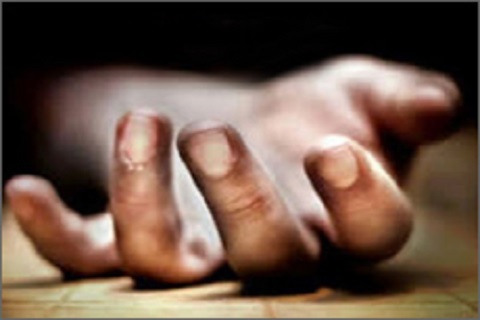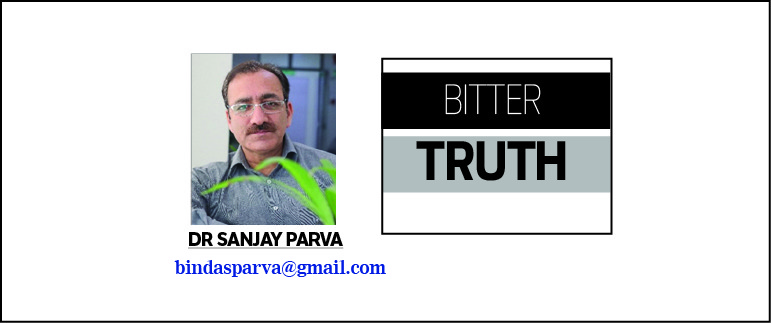BY: Dr. Ab Hamid Sheikh
WHO Director General, Dr. Tedros Adhanom Ghebreyesus reported that “despite progress, one person still dies every 40 seconds from suicide.” World Suicide Prevention Day is observed every year on September 10 for creating awareness about suicidal tendencies and the preventive measures thereof. ‘Creating hope through action’ has been the triennial theme for the World Suicide Prevention Day from 2021-23. This theme is a reminder that there is an alternative to suicide and aims to inspire confidence and light in all of us.
By creating hope through action, a message is conveyed to the people experiencing suicidal thoughts that there is a hope and we care and support them. This Day underscored the importance of setting suicide prevention as a priority public health agenda by the countries and availability of evidence-based interventions. However, while observing such initiatives and efforts at international level that too from decades, one question directly strikes one’s mind i.e. how much have we succeeded in controlling this trend. The statistical figures enunciated that controlling this incorrigible action through medical aid and counselling seems to be a timeless journey, may become ephemeral by inculcating and disseminating moral and ethical values among various societies.
The World Health Organisation (WHO) and the Global Burden of Disease study estimates that almost 800,000 people die from suicide every year i.e. one person every 40 seconds. Globally, 9 people per 100,000 died from suicide in 2019. Suicide rates range from approximately over 20 per 100,000 across Eastern Europe, South Korea, Zimbabwe and Guyana to less than 5 per 100,000 across North Africa, the Middle East, Indonesia, Peru and some Mediterranean countries. India accounts for 21% of the total suicides in the world.
The National Crime Records Bureau reported that India recorded over 1.64 lakh deaths due to suicide in 2021, an average of nearly 450 daily or 18 every hour, with figure reaching the highest for any calendar year. Some media reports suggest that the rate of suicide among students is also increasing every year. Around 12,526 students died by suicide in 2020 which rose to 13,089 in 2021.
The locus of Kashmir valley is not different, intensity of which can be gauged as the Institute of Mental Health and Neurosciences-Kashmir (IMHANS), GMC Srinagar and NGO SRO Kashmir started the first Suicide Prevention Helpline named ‘Zindagi’ (life), which offers suicide prevention counselling, first aid, psychological support, distress management, mental well-being, promotes positive behaviour and psychological crisis management. The Valley witnessed 586 attempted suicide cases in 2021 while the number was at 472 in 2020. There were 41 cases of abetment to suicide in 2021, while there were 35 in 2020. The statistical data underlined the fact that suicide is increasing at an alarming rate round the world, as such, it is a matter of serious concern.
Every death is a tragedy for family, friends and colleagues. Yet suicides are preventable. The experts give different reasons for suicides and focus is mostly laid on one main cause i.e. distress, which provokes an individual to take such a decision. Dr Afaaq Sayeed, Director, NGO SRO, said, ‘it is a myth that only younger people have suicidal tendencies. We receive calls even people who are well over 60 years of age- some of them financially well off.
Different people have different problems. Some are working in top positions in the corporate world and are worried about targets. Some are stressed out because of the academic competitions while Some have family issues.’ Dr Zoya Mir, a clinical psychologist at Zindagi said adding that suicide rate is increasing in seeing an upsurge in Kashmir. “Being a Muslim dominated society, suicide was not in our wildest of dreams,” she says adding that, “we were taught harming oneself or suicide is Haraam. Those who attempt suicide do not want to die but they want an end to their pain. When they are not able to control their pain and trauma, they see suicide is as a last resort.”
The moment a mentally ill person hears about the news of a suicide, it automatically gives him/her the push for doing the same and copy it. So, there is a need to break this chain, if someone is suffering from any issue, he/she need family support and most importantly hope. The finest way for creating hope and raising morale among the distressed is spiritualism and moral education.
Spiritual faith is an overarching term that includes both religiosity and spirituality. Religiosity is associated with the adherence to beliefs, doctrines and practices of a given religion, with an emphasis on the individual’s relationship with the God. Religiosity as a source of hope and confidence reduces the risk of depression in times of mounting stress, facilitates recovery and diminishes suicide risk. Spirituality on the other hand is the internalised aspects of positive faith-based beliefs that support overall life satisfaction. Spiritual beliefs and practices tend to help people experience greater hope and meaning in their lives. Faith communities can also provide opportunities for developing positive relationships with others and can be an important source of support during difficult times. Spiritual well-being has been lauded to exert a protective effect against suicidal behaviour.
Thus, faith may operate via the internalisation of positive, faith-based beliefs and thereby enhance the youth’s ability to cope, possibly assuaging the progression from passive ideation to ideation with intent. It may also resonate with youth who have internalised the positive life values from their faith-based beliefs and therefore rely on the faith-based coping to reframe stressful events. Hermann Hesse positively pointed out that, “all suicides have the responsibility of fighting against the temptation of suicide. Every one of them knows very well in some corner of his soul that suicide, through a way out, is rather a mean and shabby one, and that it is nobler and finer to be conquered by life than to fall by one’s own.”
The writer is a teacher and can be mailed at abhamid502@gmail.com




